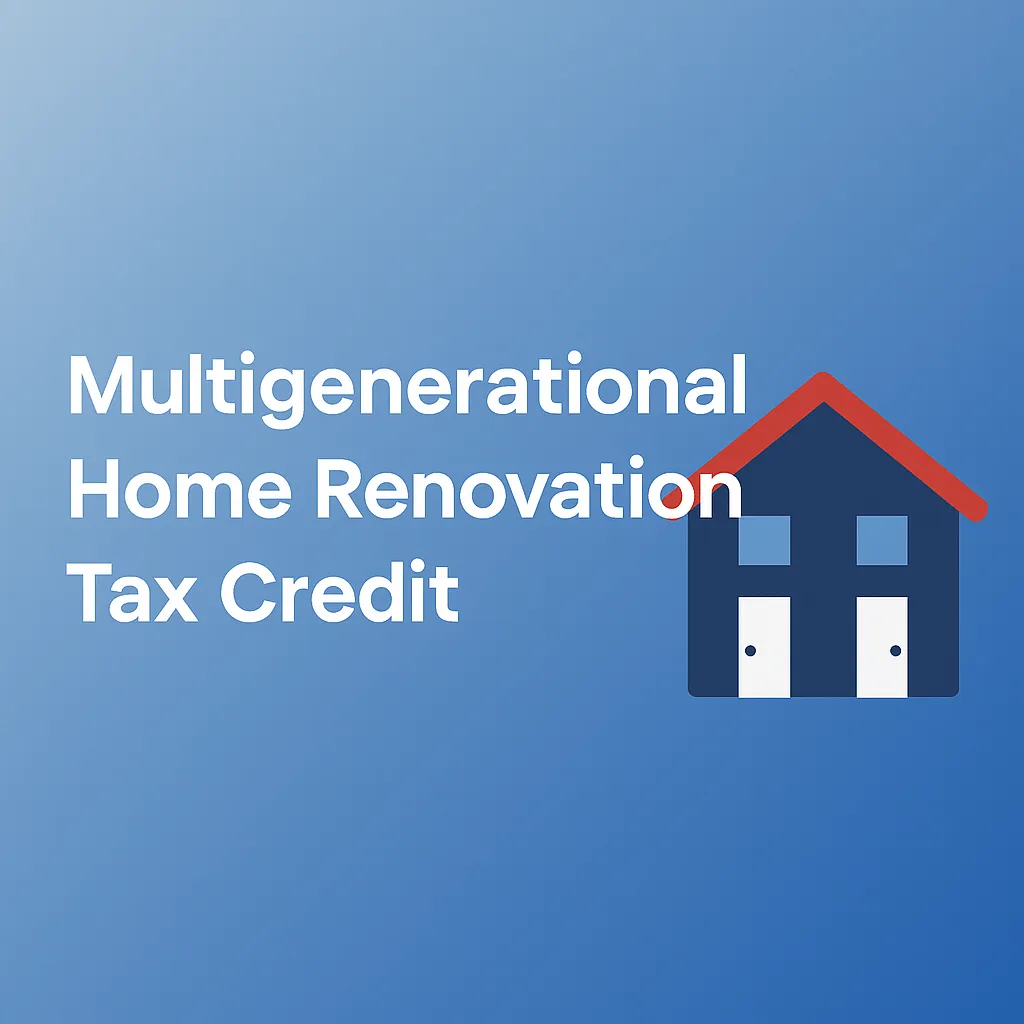Introduction
Creating a multigenerational home—a shared space for seniors or adults with disabilities and their relatives—not only strengthens family ties but can also earn you federal tax savings. The Multigenerational Home Renovation Tax Credit (MHRTC) offers up to $7,500 back on eligible renovations. Let’s unpack how it works, who it helps.
You can claim up to $50,000 in qualifying expenditures for each qualifying renovation that is completed. The tax credit is 15% of your costs, up to a maximum of $7,500, for each claim you are eligible to make.
Why It Matters
- Financial Relief: Covers 15% of renovation costs, up to $50,000—equating to $7,500 per claim
- Support Aging in Place: Enables families to build self-contained units for seniors or disabled adults—promoting independence and comfort.
- Policy Alignment: Encourages smart use of existing homes to address housing needs
For Whom Does It Matter?
- Qualifying Individual: Must be at least 65 by year-end, or an adult (18+) eligible for the Disability Tax Credit.
- Qualifying Relation: Applicant must be a spouse, parent, child, sibling, aunt/uncle, niece/nephew (all age 18+) or homeowner/tenant in the dwelling.
- Eligible Dwellings: Must be in Canada, owned by the qualifying individual or relation, and intended to be occupied within 12 months after renovation.
Key Points & Steps
1. What Qualifies as a Secondary Unit
- Must have a private entrance, kitchen, bathroom, and sleeping area—new or reconfigured space that meets local codes.
2. Eligible Costs
- Permits, materials, labor (contractors), accessibility features (ramps, grab bars), and professional fees (architects, trades).
- Ineligible: personal tools or own labor, appliances, cosmetic work, landscaping, financing costs.
3. Maximum Claim
- 15% of expenses up to $50,000 = $7,500 maximum refund per eligible person, per lifetime
4. Lifetime Limit
- Only one MHRTC per qualifying individual in their lifetime.
5. Claiming Process
- Ensure renovation is completed within the tax year.
- Keep detailed receipts, permits, documentation.
- File on your T1 return, typically with Form RC4034 (refer to CRA guidance).
Real‑Life Scenario
Fatima, Ali & Taurus (father):
Taurus (78) moves in with son Ali in Brampton. Sisters Fatima and Abdul help finance an upstairs suite with separate entrance, kitchen, and bath.
- Taurus and Fatima, both owners/contributors, can claim up to $50,000 each (split costs) and both receive up to $7,500 credit
- Abdul, who lives elsewhere, is not eligible as he doesn’t occupy the home
FAQ
Q: Can I claim it if I start in 2024 but finish in 2025?
A: Yes—claim it in your 2025 tax return when the renovation is completed .
Q: Can multiple family members claim for the same project?
A: Yes, they can split the eligible costs—but total claimed by all cannot exceed $50,000 per qualifying individual .
Q: Are accessibility reno credits the same?
A: No—Home Accessibility Tax Credit (HATC) is separate: up to $20,000 in costs @ 15%, non-refundable. MHRTC is refundable and must be for a secondary dwelling .
Conclusion
The MHRTC is a valuable tool for Canadians—who want to renovate for multigenerational living. It promotes independence for seniors/disabled relatives and gives homeowners a meaningful financial boost. With careful planning, proper documentation, and awareness of eligibility rules, families can truly benefit—both socially and economically.

